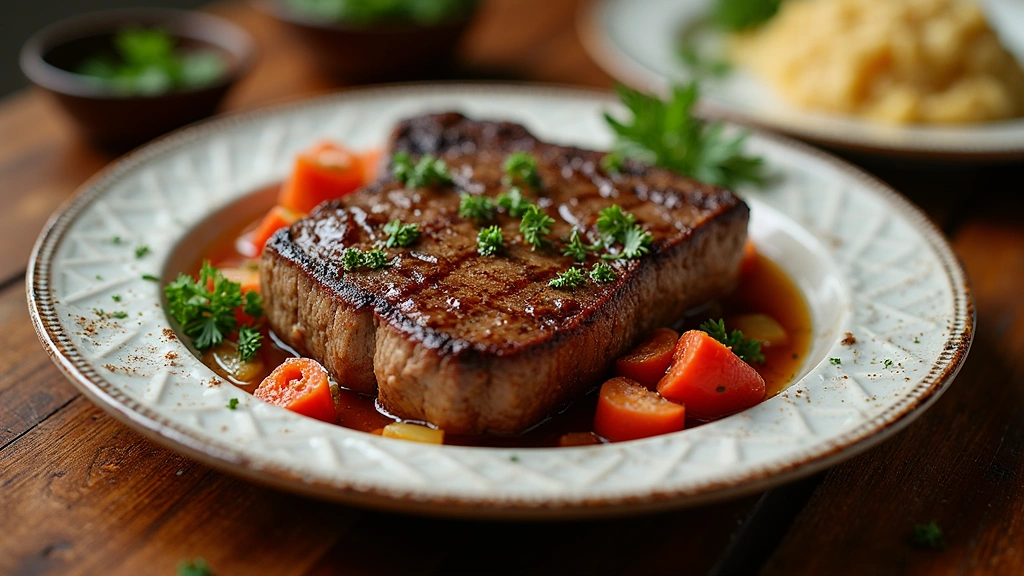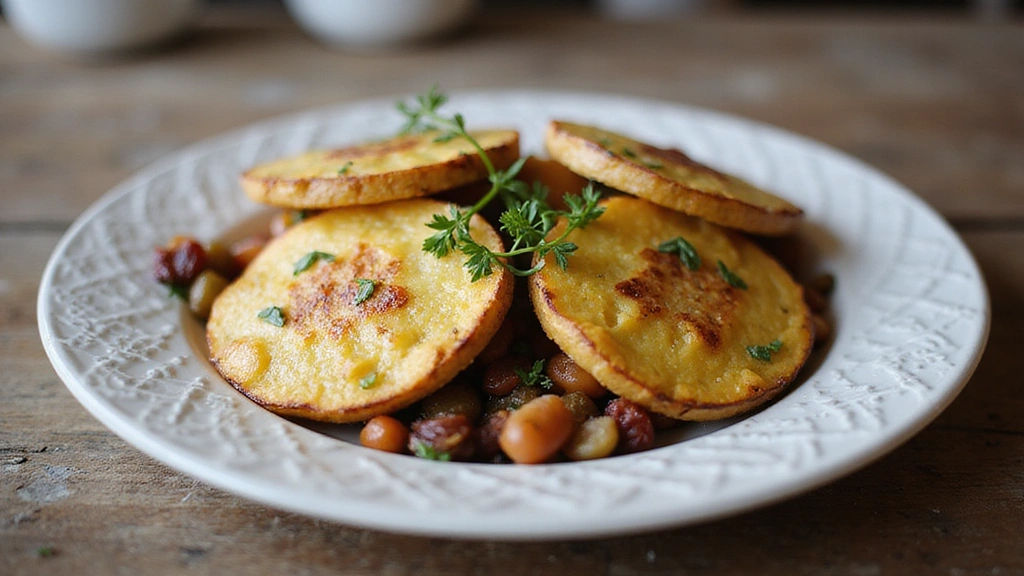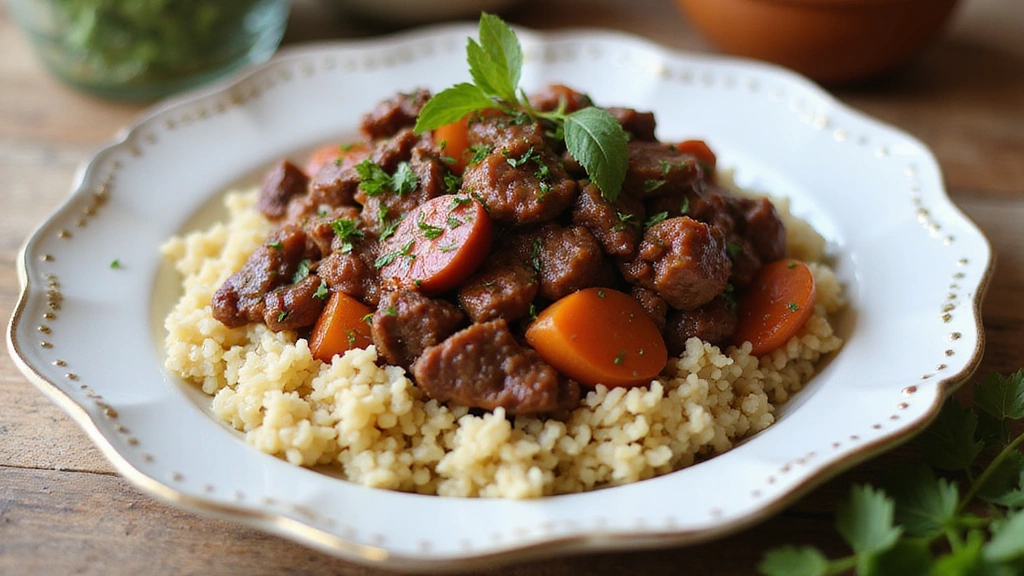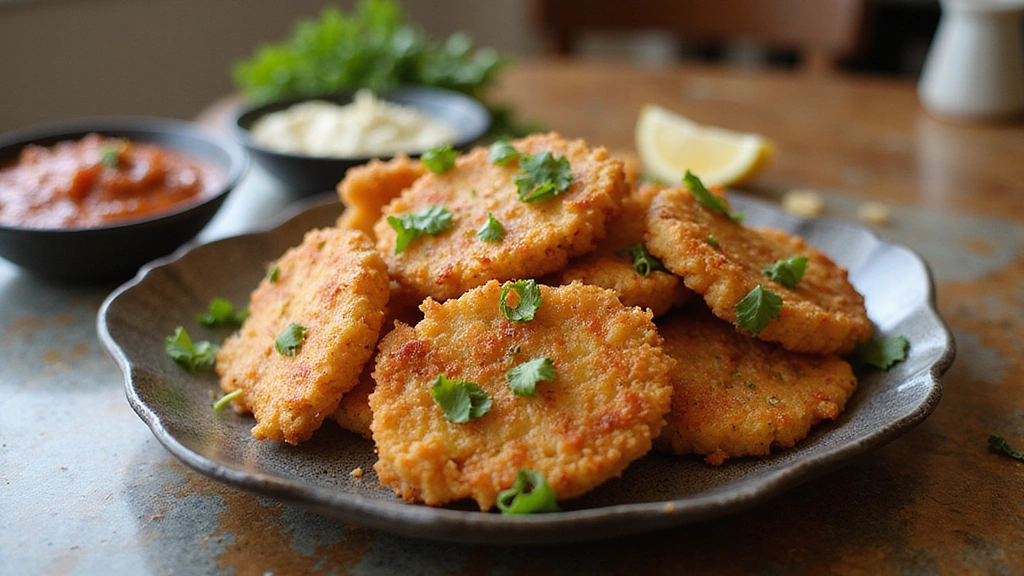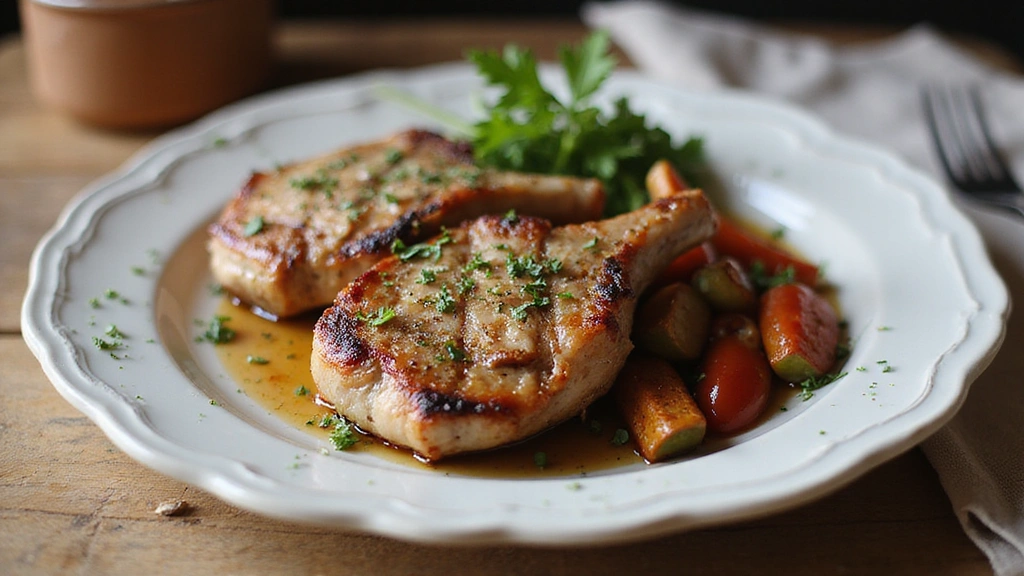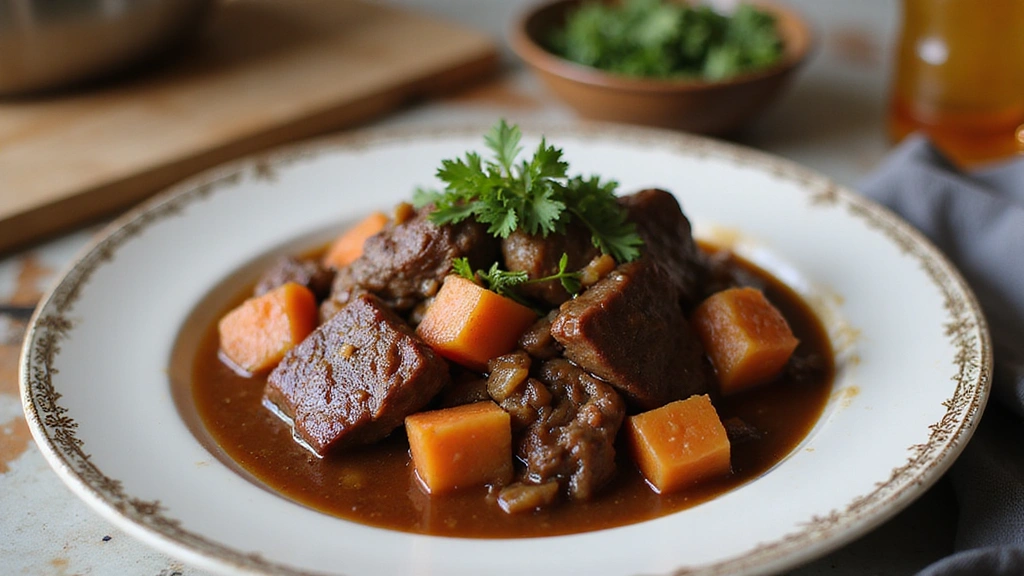Robust beef recipes are a staple in many cultures, embodying comfort and hearty flavors that warm the soul.
From sizzling steaks to slow-cooked stews, these dishes offer a range of textures and tastes that can satisfy even the heartiest of appetites.
I fondly remember family gatherings where the aroma of beef stew simmering on the stove filled the air, creating an inviting atmosphere.
Whether enjoyed on a chilly evening or during a festive occasion, robust beef dishes bring people together, making every meal memorable.
The History and Cultural Significance
• Robust Beef Recipes For Dinner traces its origins to medieval Europe, where hearty meat dishes were essential for sustenance.
• The dish evolved over decades as cooking methods improved and ingredients became more accessible, eventually becoming a beloved comfort food worldwide.
• In many cultures, this dish traditionally appears at family gatherings and holiday celebrations, symbolizing unity and abundance.
• While many variations exist across different regions, the authentic version maintains a focus on quality meat and slow cooking that develops rich, deep flavors.
Recipe Overview
Nutritional Information (per serving)
Ingredients
Essential Equipment Guide
Cast Iron Skillet: This heavy-duty skillet is perfect for searing steaks due to its ability to retain heat, ensuring a perfectly browned crust. Look for one with a smooth surface and a sturdy handle for easy maneuvering.
Slow Cooker: Ideal for stews, a slow cooker allows for low and slow cooking, which enhances flavors and tenderizes meat. Choose a size that suits your needs, and consider one with programmable settings for convenience.
Sharp Chef’s Knife: A sharp knife is essential for accurately cutting meat and vegetables, ensuring even cooking. Invest in a good quality knife to make prep work quicker and safer.
Preparation Methods
Chopping Techniques: Mastering the art of chopping vegetables is crucial for even cooking. Use a sharp knife and practice the claw grip technique to keep fingers safe while achieving uniform pieces.
Deglazing: This technique involves adding liquid to a hot pan to loosen browned bits from the bottom. It’s essential for building flavor in dishes; just remember to scrape the pan while adding the liquid to capture all those tasty morsels.
Searing: Searing meat at a high temperature creates a flavorful crust through the Maillard reaction. Make sure your pan is hot enough before adding the meat, and avoid overcrowding to ensure proper browning.
Step 1: Prepare Ingredients
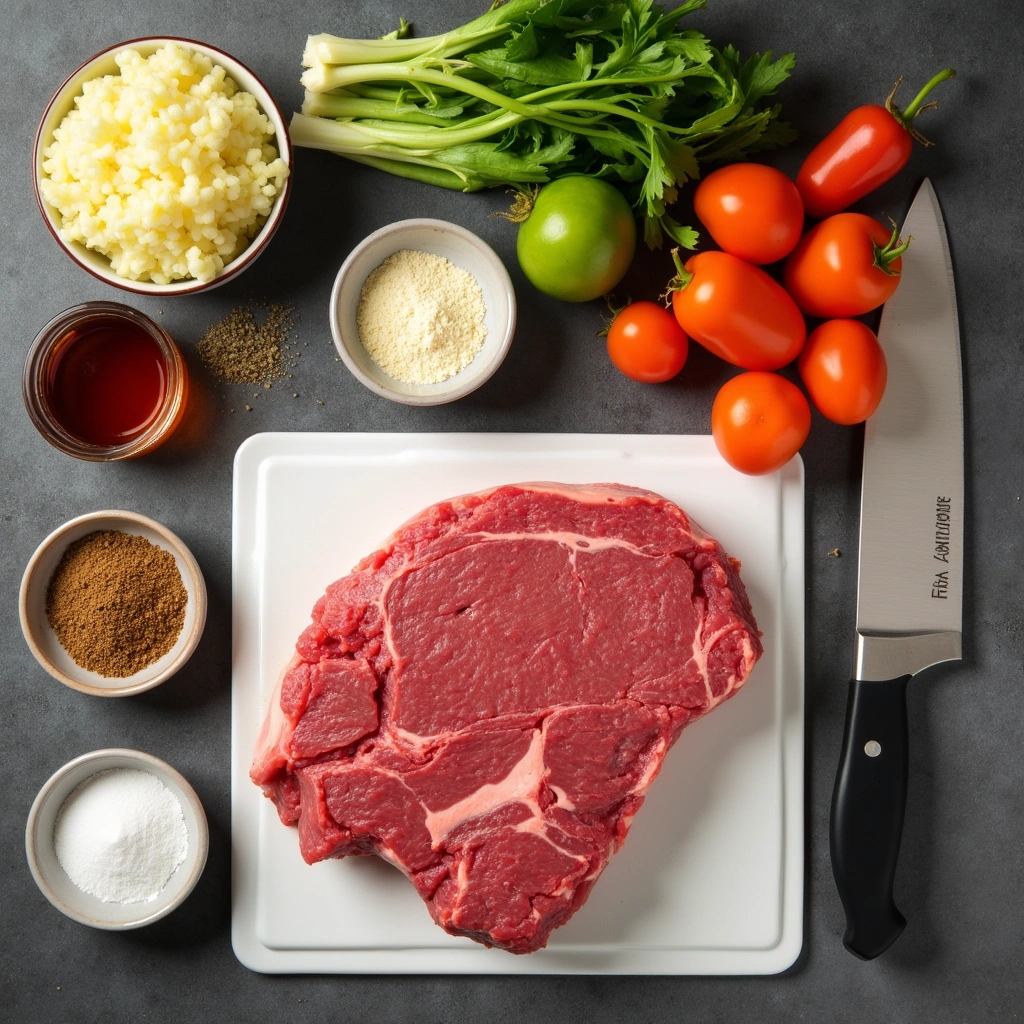
Gather all ingredients and tools needed for the recipe.
Ensure the beef is at room temperature for even cooking.
Chop the vegetables into uniform sizes for consistent cooking.
Measure out spices and broth to have everything ready when needed.
Step 2: Season the Steaks
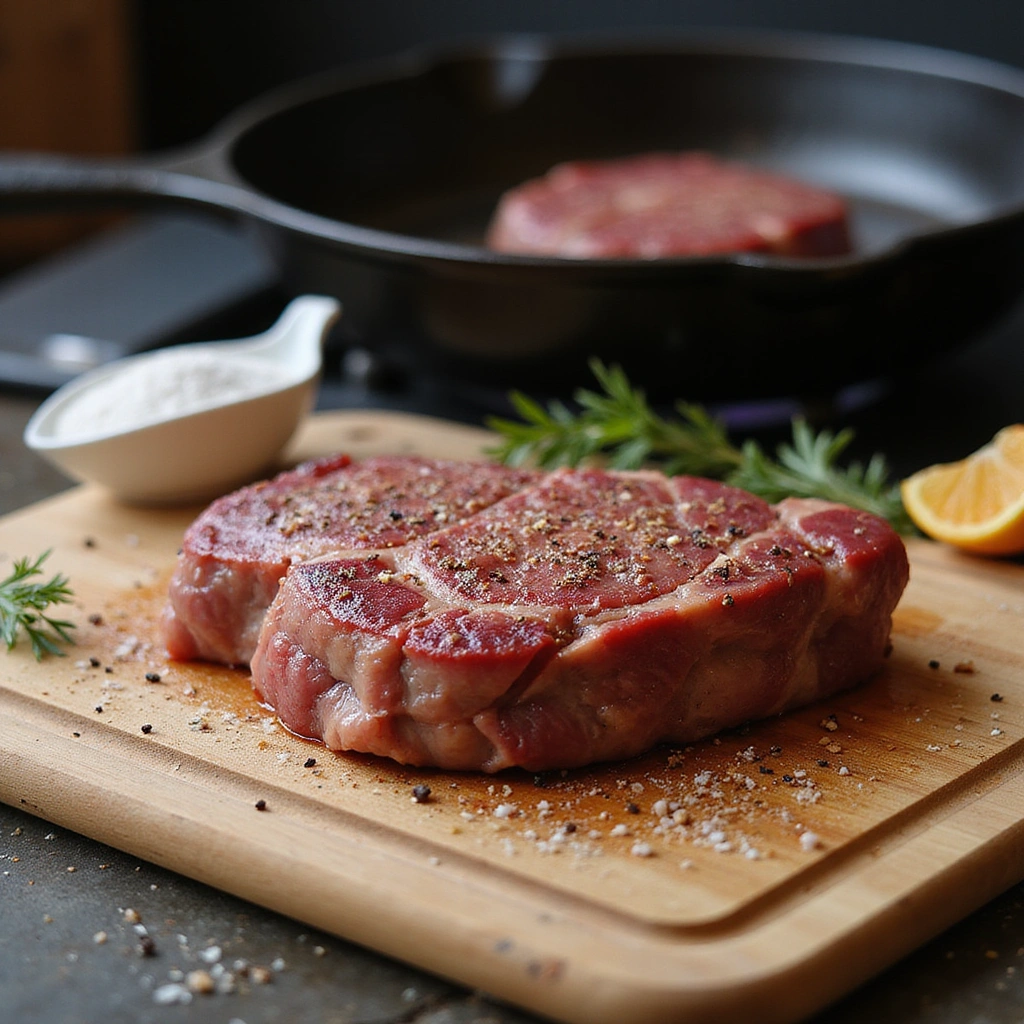
Generously season both sides of the ribeye steaks with salt and pepper.
Let the steaks sit for about 15 minutes to absorb the seasoning.
This step enhances the flavor and prepares the meat for cooking.
While waiting, preheat your cast iron skillet over medium-high heat.
Step 3: Sear the Steaks
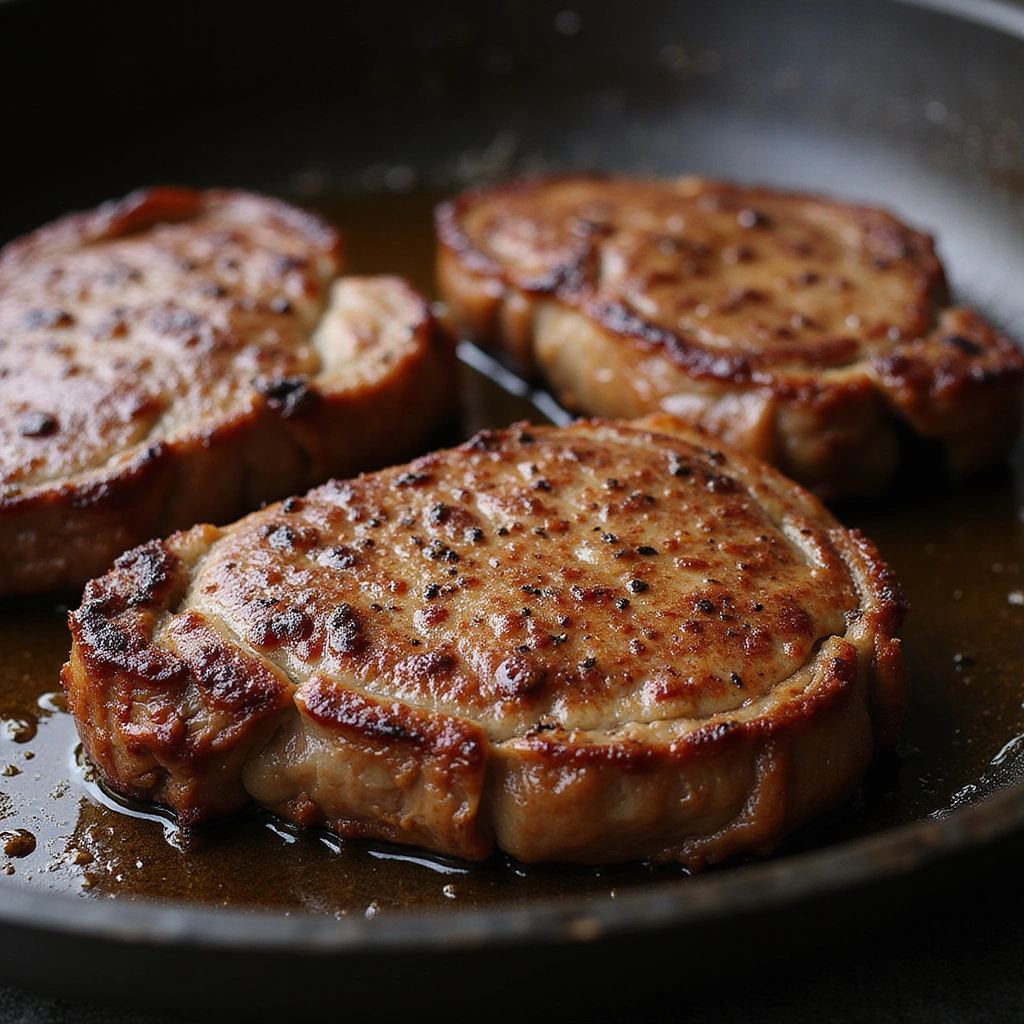
Place the seasoned steaks in the hot cast iron skillet.
Cook for about 4-5 minutes on each side for medium-rare doneness.
Look for a deep brown crust to form before flipping the steak.
Avoid moving the steaks around to ensure proper searing.
Step 4: Remove and Rest the Steaks
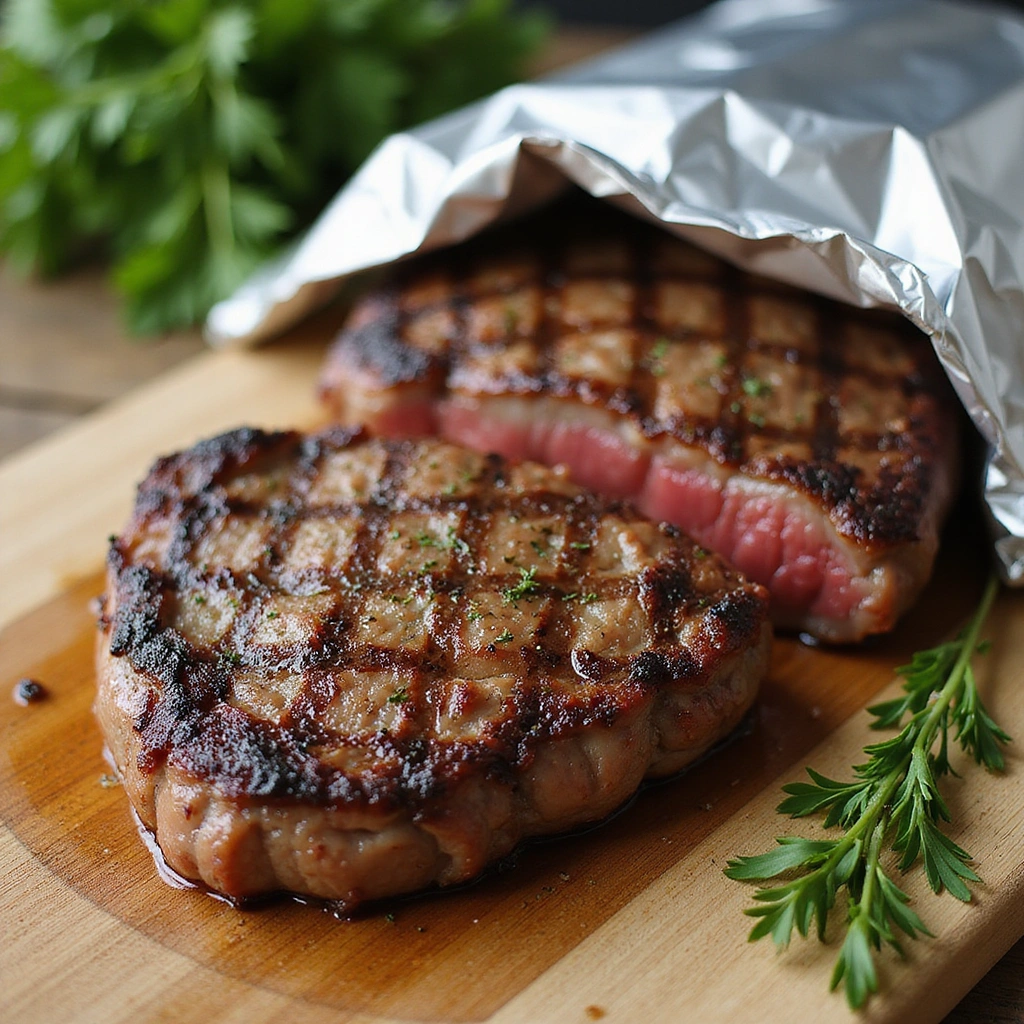
Once seared, remove the steaks from the skillet and let them rest on a cutting board.
Resting allows the juices to redistribute for a tender bite.
Cover loosely with foil to keep them warm while preparing the stew.
This step is crucial for achieving juicy, flavorful steaks.
Step 5: Brown the Stew Meat
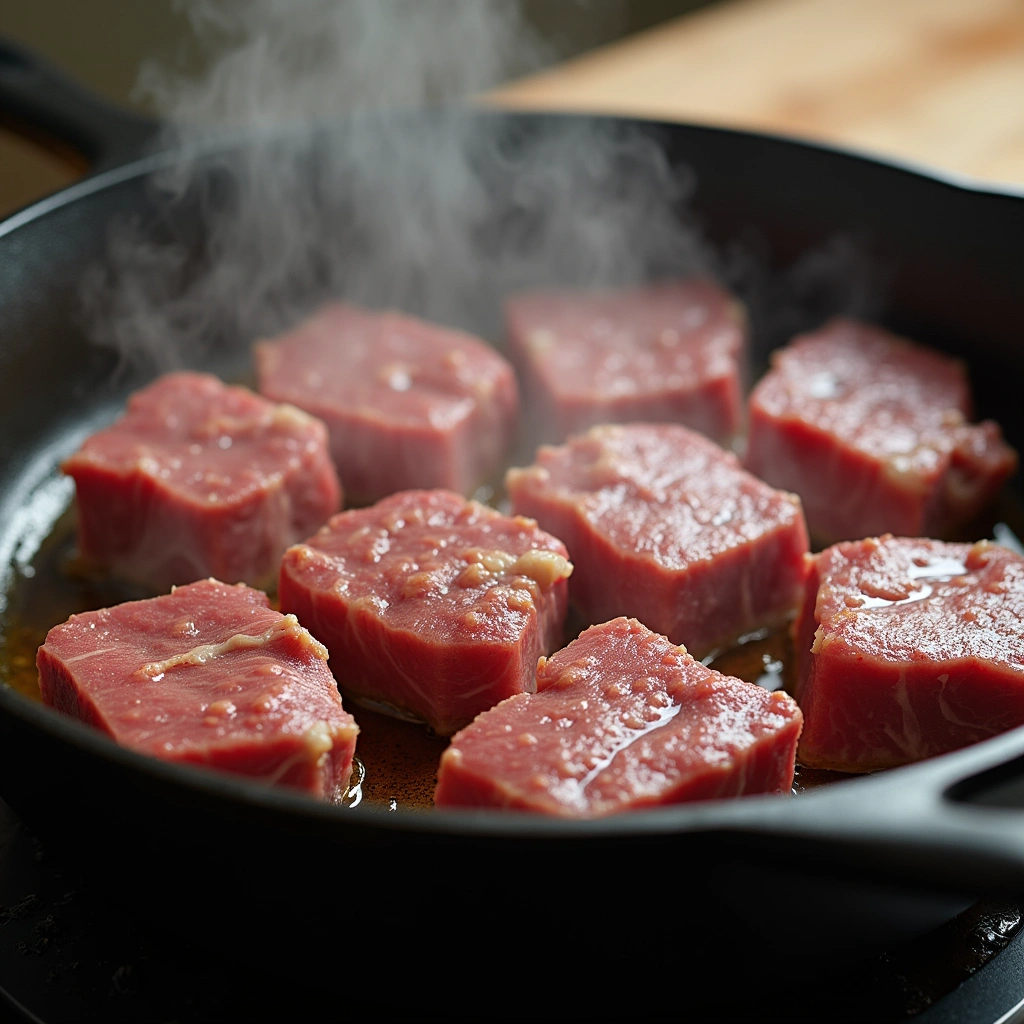
In the same skillet, add olive oil and heat over medium-high heat.
Add the beef chuck cubes, browning them on all sides for about 5-7 minutes.
This step builds flavor from the fond left in the skillet.
Ensure not to overcrowd the pan, cooking in batches if necessary.
Step 6: Add Vegetables and Aromatics
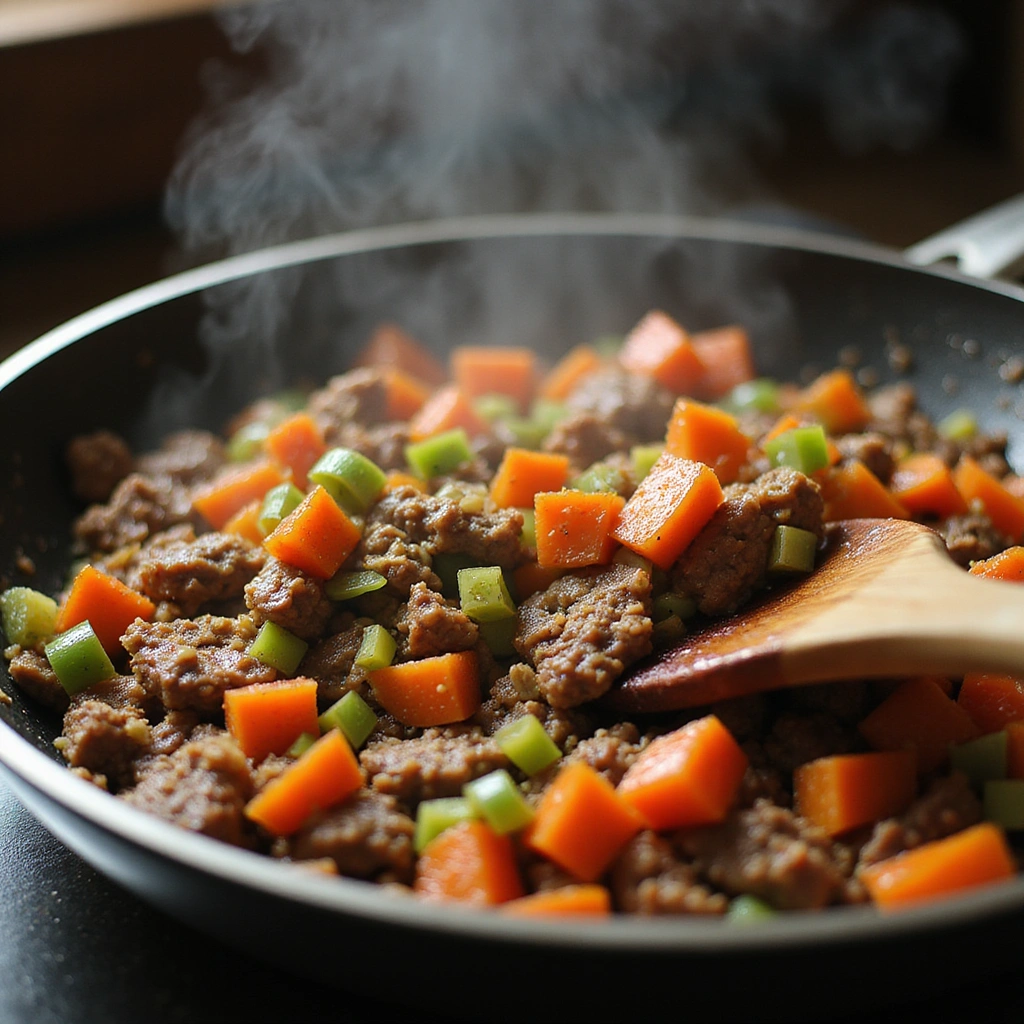
Once the meat is browned, add chopped onions, carrots, and celery to the skillet.
Sauté the vegetables for about 5 minutes until they soften.
Add minced garlic and tomato paste, stirring to combine and cook for another minute.
This step builds a flavorful base for the stew.
Step 7: Deglaze the Skillet
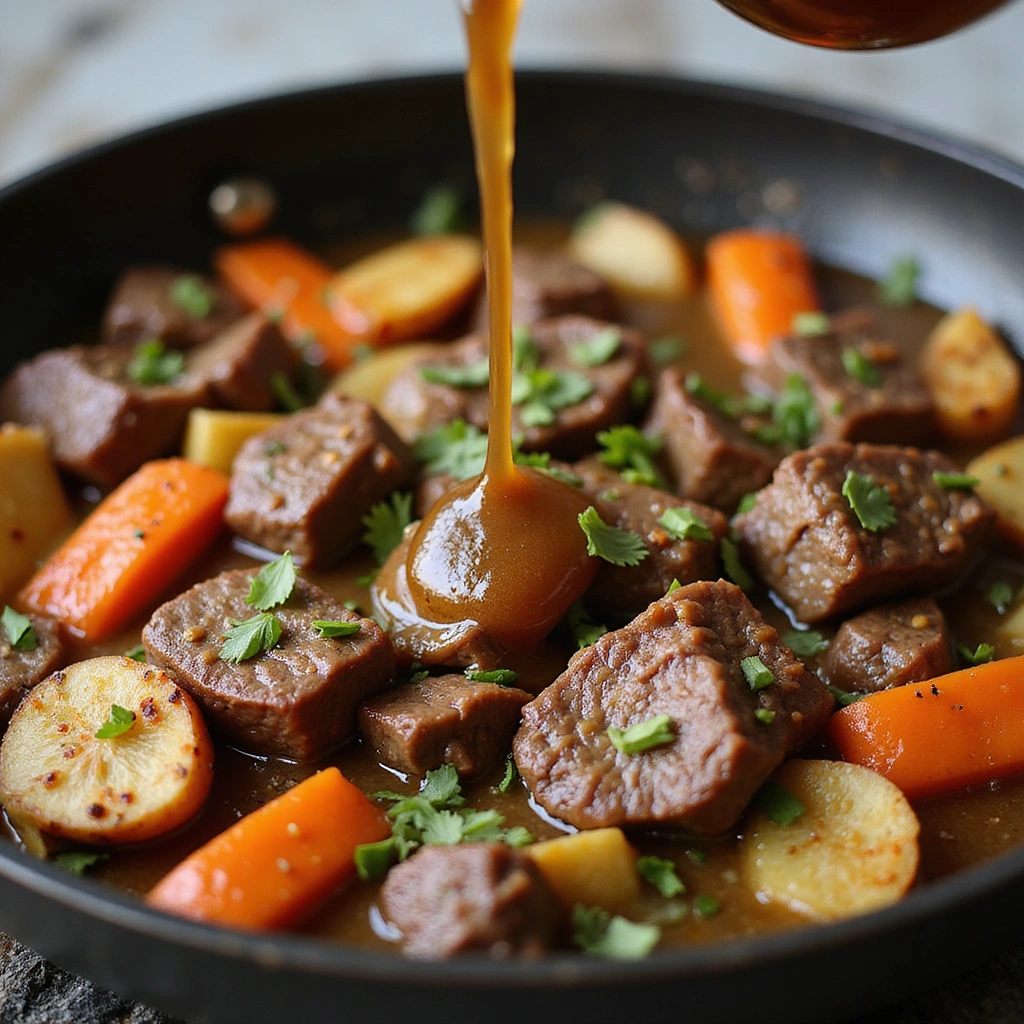
Pour in one cup of beef broth to deglaze the skillet.
Scrape the bottom of the pan with a wooden spoon to release flavorful bits.
This step enhances the depth of flavor in your stew.
Allow the broth to simmer for a few minutes to reduce slightly.
Step 8: Combine and Simmer
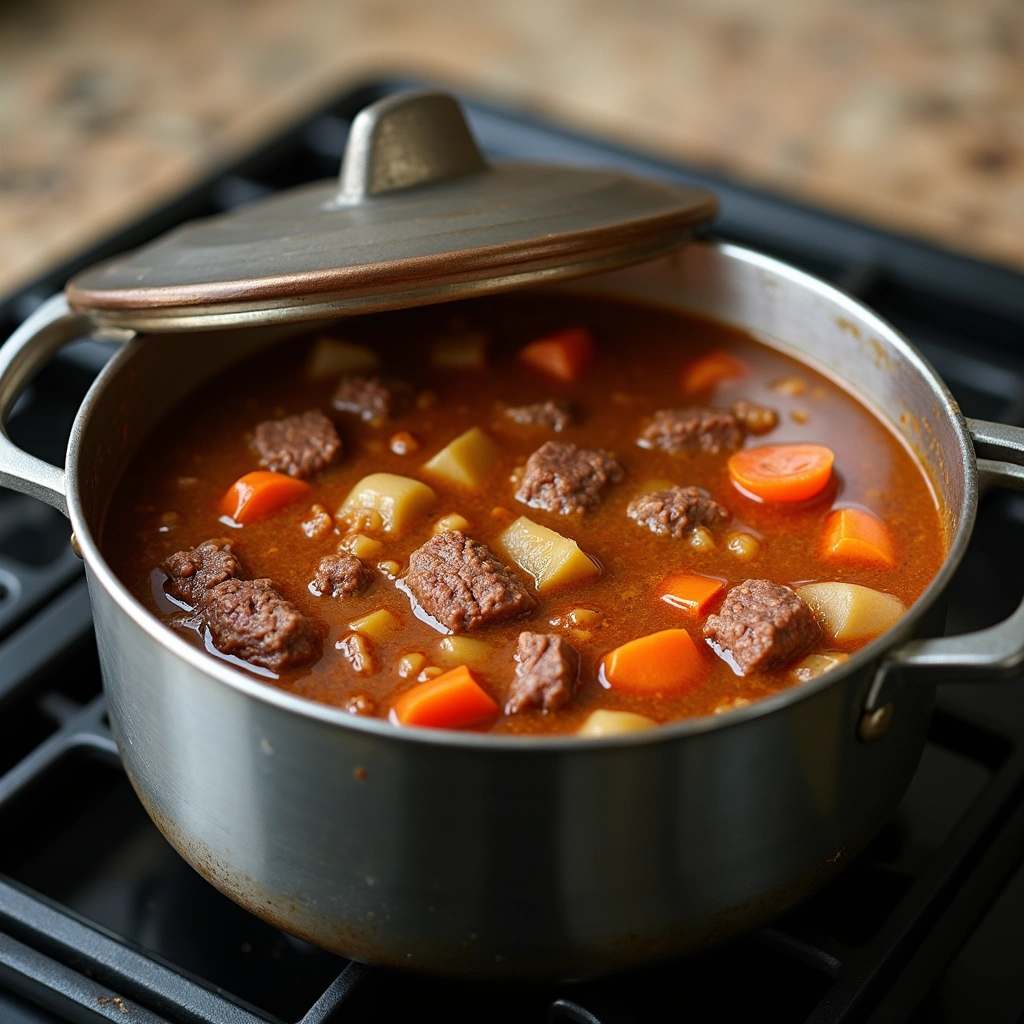
Transfer the beef and vegetable mixture to a large pot or slow cooker.
Add the remaining beef broth, bay leaf, and thyme.
Bring the mixture to a boil, then reduce to a simmer.
Cover and cook for 2-3 hours until the beef is tender and flavors meld.
Step 9: Final Adjustments
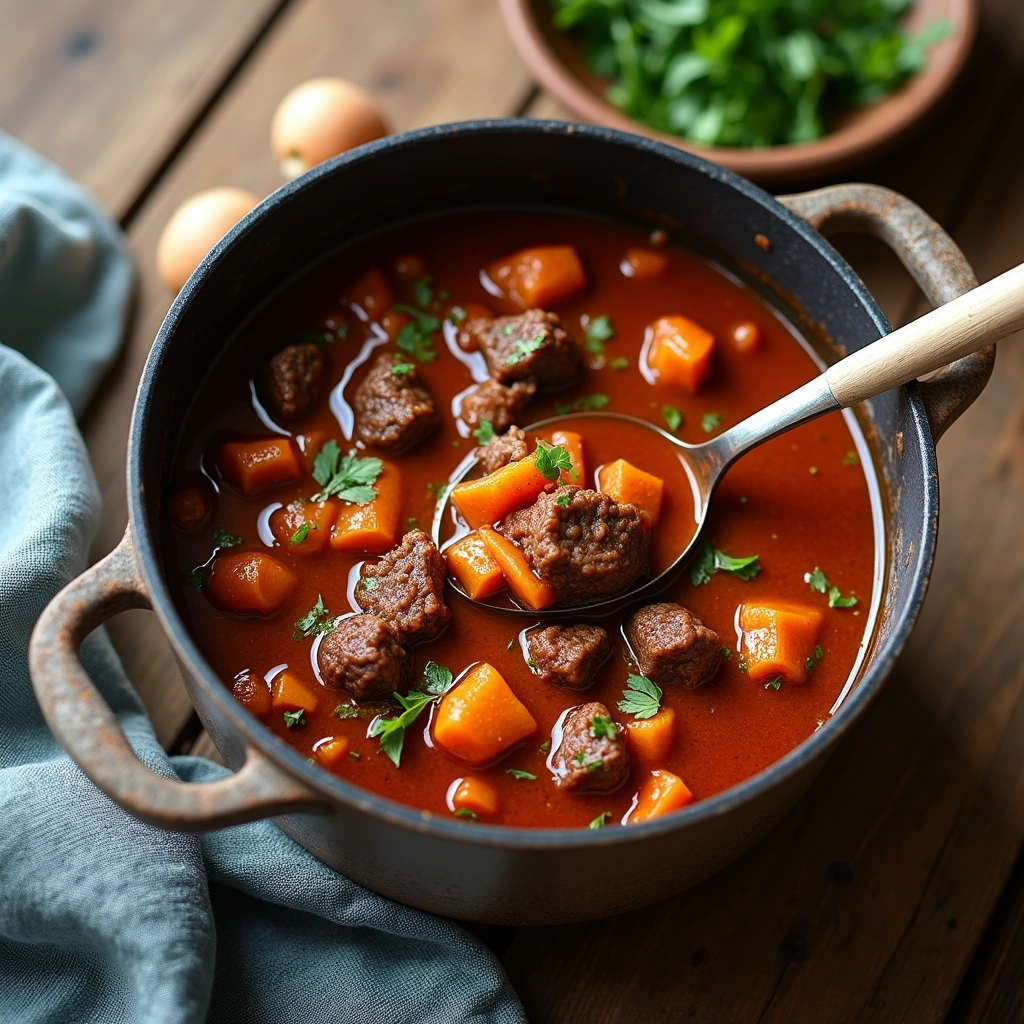
After cooking, taste the stew and adjust seasoning as needed.
Remove the bay leaf before serving, as it can be tough.
If the stew is too thick, add a little more broth to reach desired consistency.
This step ensures a balanced flavor and texture.
Step 10: Serve and Enjoy
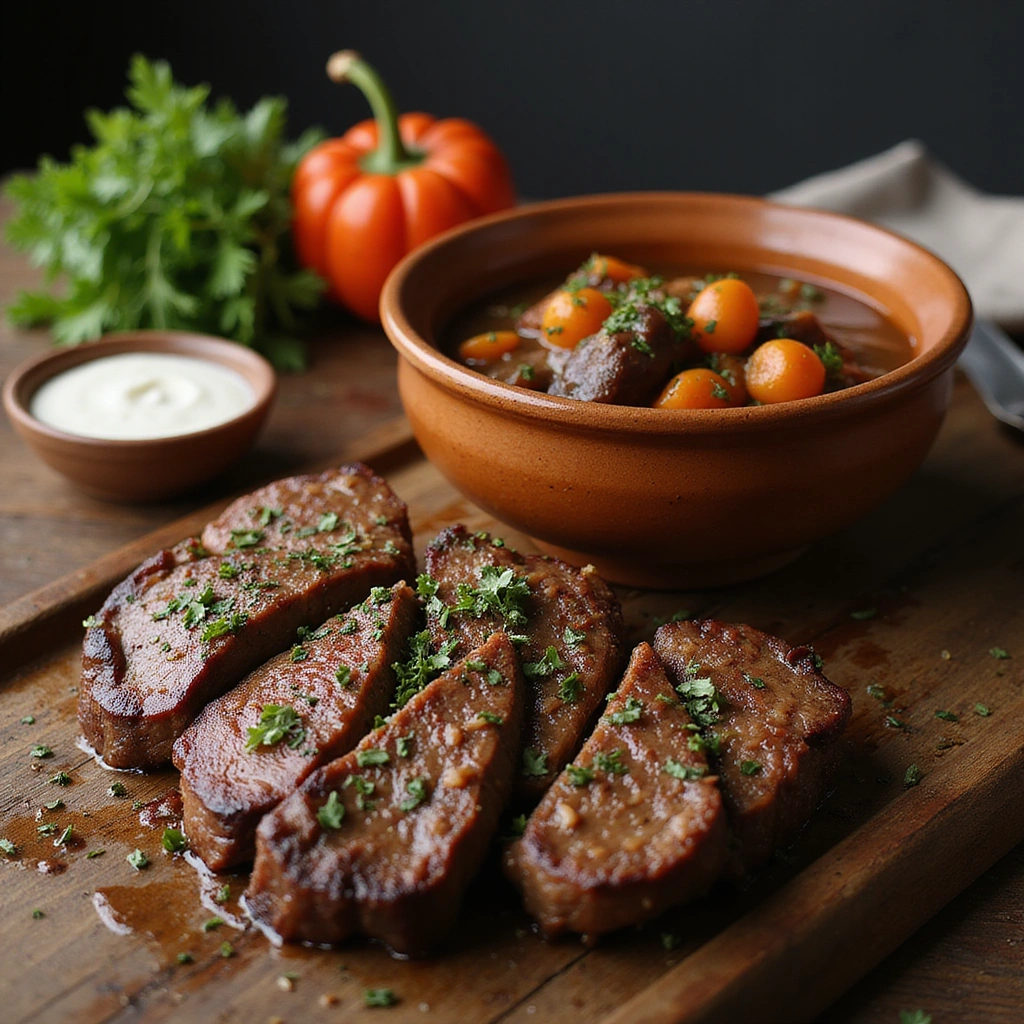
Ladle the stew into bowls and serve alongside the rested ribeye steaks.
Garnish with fresh herbs for an added touch of flavor.
Pair with crusty bread or a side salad for a complete meal.
Enjoy the warmth and richness of this robust beef dinner.
Critical Timing and Temperature Guide
Searing Steaks: Aim for a skillet temperature of around 400°F. Sear for 4-5 minutes per side to achieve a medium-rare steak, which should reach an internal temperature of 130-135°F. Avoid moving the steak during cooking to ensure a proper crust.
Simmering Stew: Keep the stew at a gentle simmer, around 180°F, for 2-3 hours. The meat should be fork-tender and flavors well-developed. Common mistakes include cooking too fast, which can toughen the meat.
Resting Meat: Let steaks rest for at least 10 minutes after cooking. This allows juices to redistribute, preventing them from spilling out when cut. Cutting too soon can lead to dry meat.
Pro Tips for Robust Beef Recipes For Dinner
• Ingredient Selection: Choose high-quality beef, preferably grass-fed, for richer flavor. The marbling in ribeye steaks is crucial for tenderness.
• Preparation Secret: Allowing steaks to come to room temperature before cooking helps them cook evenly.
• Temperature Management: For best results, ensure both the steaks and the skillet are hot before cooking to achieve a proper sear.
• Texture Enhancement: Searing meat in batches prevents overcrowding, ensuring an even crust and better texture.
• Flavor Layering: Build flavors by deglazing the skillet after browning meat to capture all those savory bits.
• Make-Ahead Strategies: Prepare the stew a day in advance; the flavors deepen as it sits in the refrigerator overnight.
• Restaurant-Quality Finishing Touches: Garnish with fresh herbs just before serving for a pop of color and freshness.
• Equipment Optimization: Ensure your cast iron skillet is well-seasoned for optimal non-stick performance.
Troubleshooting Common Issues
• Steak Too Tough: This usually occurs from overcooking or using low-quality meat. Ensure you’re using well-marbled beef and avoid cooking past medium-rare.
• Stew Lacks Flavor: If your stew tastes bland, consider adding more herbs and spices during cooking or a splash of vinegar for brightness.
• Stew Too Thin: If your stew doesn’t thicken, consider creating a slurry with cornstarch and water, then stirring it in while simmering.
• Overcooked Vegetables: To prevent mushy vegetables, add them later in the cooking process, especially if you prefer them with a bit of crunch.
• Burnt Bottom: If you notice burning, reduce heat immediately and scrape the bottom of the pot. Avoid cooking on too high heat, especially during the simmering stage.
Variations and Regional Differences
• Irish Beef Stew: This version includes stout beer for added depth and uses potatoes as a key ingredient, giving it a heartier texture.
• Argentinian Asado: A popular method where beef is grilled over open flames, often served with chimichurri sauce, highlighting the natural flavors of the meat.
• French Bourguignon: A classic stew that incorporates red wine, lardons, and mushrooms, resulting in a rich and luxurious flavor profile.
• Modern Interpretations: Many chefs are now integrating global spices and techniques, such as adding Asian-inspired ingredients like ginger and soy sauce to traditional beef stew.
Food Science Behind the Recipe
• Maillard Reaction: This chemical reaction occurs when proteins and sugars in meat react to heat, creating a brown crust and complex flavors that enhance taste.
• Collagen Breakdown: Slow cooking breaks down collagen in tougher cuts of beef, transforming it into gelatin, which enriches the stew’s texture and mouthfeel.
• Flavor Concentration: As the stew simmers, water evaporates, concentrating the flavors and creating a more intense taste profile.
Frequently Asked Questions
What’s the most common mistake people make when preparing robust beef recipes? Often, home cooks overcook the meat, leading to toughness. To prevent this, use a meat thermometer and aim for the correct internal temperature.
Can I prepare components of this dish in advance? Yes, you can chop vegetables and even marinate the beef a day ahead. Store them properly in the refrigerator.
How do I adapt this recipe for dietary restrictions? For gluten-free options, ensure your broth is gluten-free and substitute starches with cornstarch or arrowroot.
What’s the best way to store and reheat leftovers? Store in airtight containers in the refrigerator for up to 3 days. Reheat gently on the stove or in the microwave; add a splash of broth if it thickens.
Can I freeze this dish? Yes, beef stew freezes well. Cool completely, then store it in freezer-safe containers for up to 3 months. Thaw in the refrigerator before reheating.
What wine or beverages pair best with this dish? A bold red wine like Cabernet Sauvignon or a rich stout complements the robust flavors of the beef.
How can I scale this recipe up for a crowd? Simply multiply all ingredients by the number of servings you need, and ensure your cooking vessel is large enough to accommodate the increased volume.
What side dishes complement this recipe best? Crusty bread or a fresh green salad pairs perfectly, balancing the richness of the beef stew.
How do professional chefs elevate this dish for restaurant service? Chefs often add garnishes like microgreens or drizzle high-quality olive oil just before serving for visual appeal and enhanced flavor.
Serving and Presentation Guide
• Traditional Presentation: Serve the beef stew in deep bowls, garnished with fresh parsley, alongside a thick slice of crusty bread for dipping.
• Modern Plating Ideas: Use wide, shallow plates for the stew, artfully arranging the ingredients and drizzling with a touch of olive oil for a polished look.
• Accompaniment Suggestions: Serve with a side of roasted vegetables or a simple arugula salad dressed with lemon vinaigrette for brightness.
• Special Occasion Presentation: For formal dinners, serve individual portions of stew in ramekins topped with a puff pastry lid, creating an elegant twist on the traditional dish.
Conclusion
I hope this robust beef recipe inspires you to create a comforting and delicious meal.
With its rich flavors and satisfying textures, it’s sure to become a favorite in your home.
Gather your loved ones and enjoy the warmth and joy this dish brings to the table.

